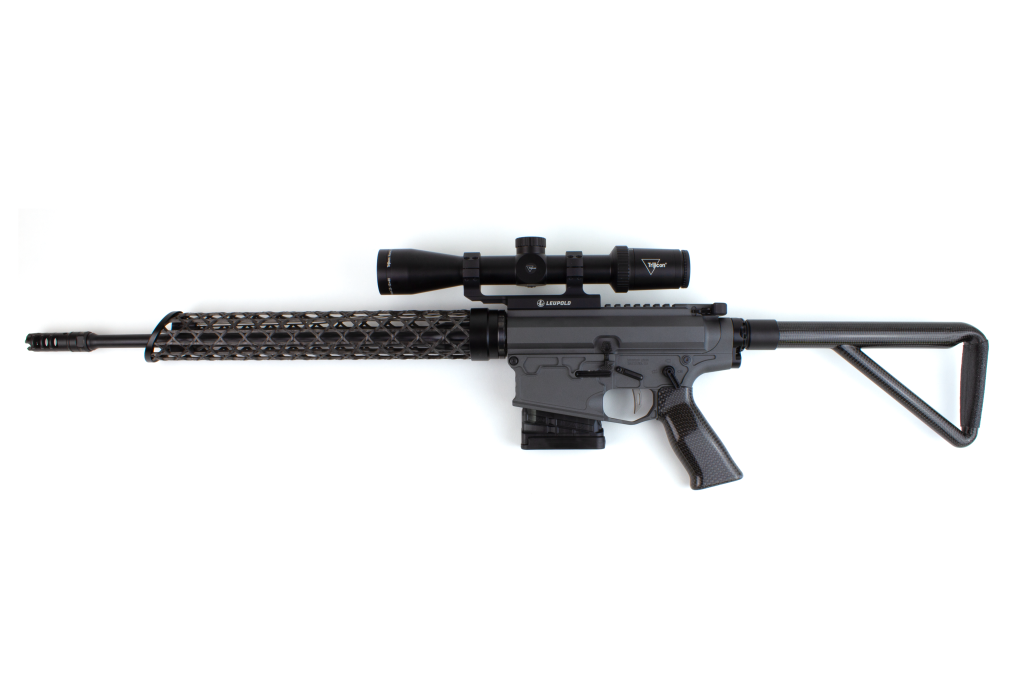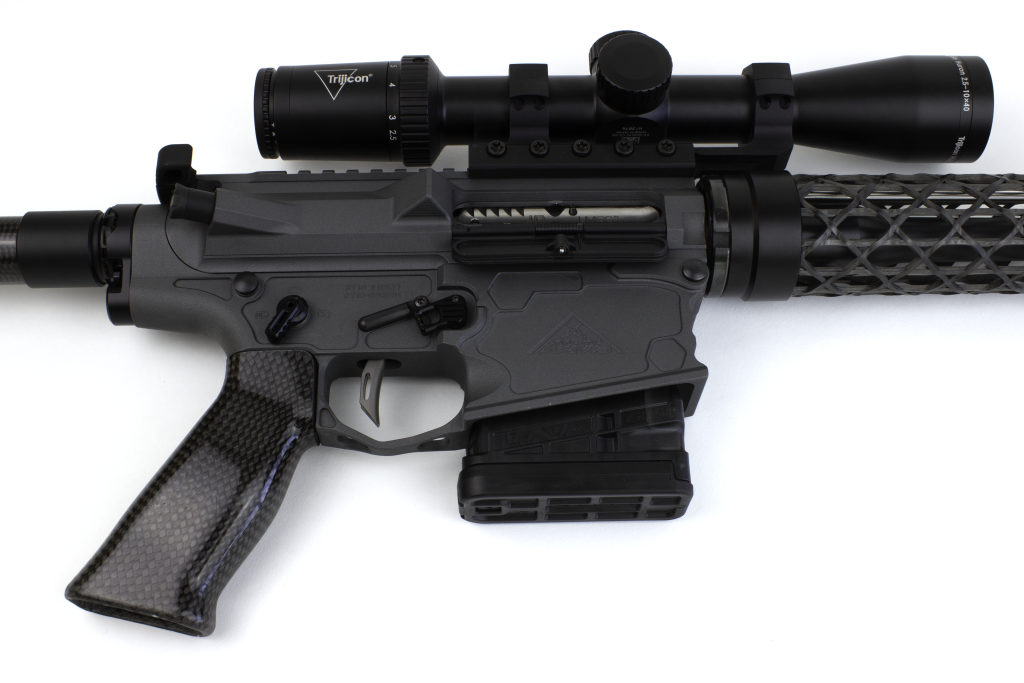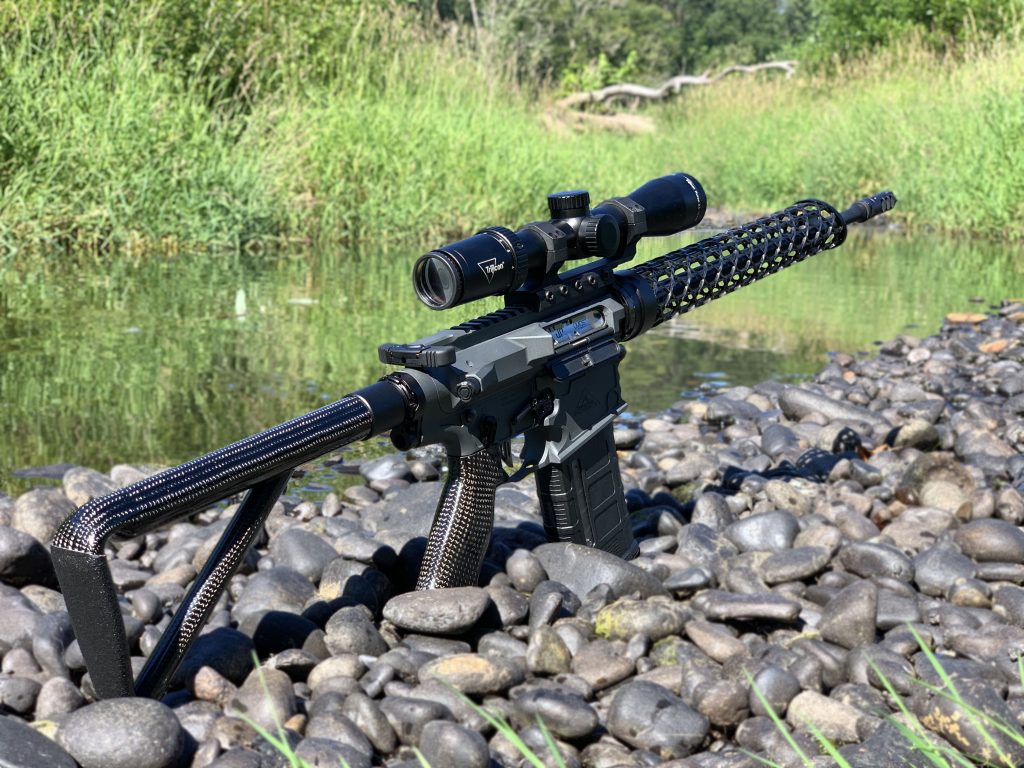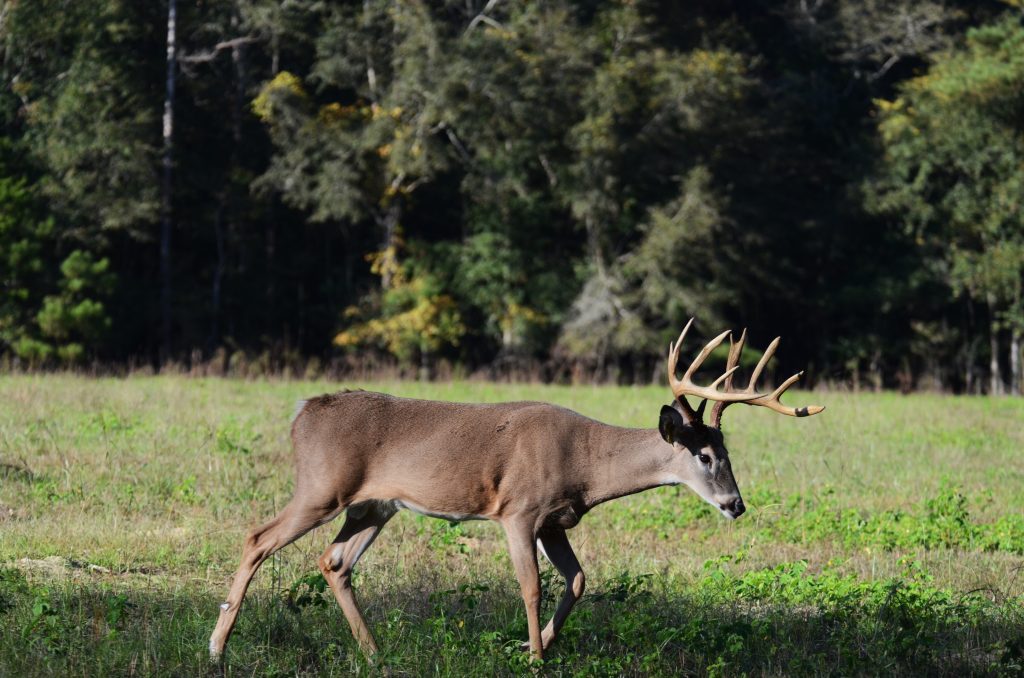AR-10 and AR-15 rifles are all the rage and hunters who decide to design a custom AR-15 are faced with challenges. The manufacturer options seem almost limitless and selecting the right components is even more daunting. Additionally, many parts are focused on tactical applications, and not attuned to hunting purposes. Therefore, it’s important to consider what each hunter should take into account when choosing the right design and builder of their AR-10 or AR-15 hunting rifle, or get professional help in doing so.
Custom AR-15 Hunting Rifle – DIY or Use a Builder?
For those who are wondering, in most instances, it is legal to build your own AR-10 or AR-15 hunting rifle. However, at times, there can be a lot of hassle, including paperwork, FFL involvement, among other things, details, and situations depending. Whether it’s an 80% lower receiver, or not, and a short barrel, or not, also result in stipulations, but we aren’t covering those here. Of course, places and states can produce additional hurdles to address, if not all-out restrict what you can and can’t do.
Regulations aside, merely selecting parts can be a significant challenge. There are dozens of ar 15 accessories needed for a build, including a stripped lower receiver, upper receiver, bolt carrier group, bolt catch, selector, grip, trigger, gas block, gas tube, buffer, buffer tube, buffer spring, barrel, barrel nut, magazine release, and much more.
Knowing what you need and want can prove difficult, especially if you don’t have a clear vision. Furthermore, if you select the wrong parts in each category, you’re left with things you can’t use or don’t need.

There are many mistakes (and dangerous ones) that inexperienced builders commonly make. Some of these include loose or over-torqued barrel nuts, loose gas blocks, loose or stripped grip screws, damaged springs, incorrect parts, incorrect barrel lengths, wrong twist rates, and much more.
So, who should tackle the DIY route, and who should seek out professional help? According to Justin Cooper and John Quade with Rooftop Arms, the answer is clear. All things considered, unless you have extensive knowledge and skills, and have been trained in gunsmithing, it’s oftentimes best to have professionals build your AR. It’s that simple. Too much is at stake.
“Essentially, the tough thing with ARs is that they’re so modular,” Cooper said. “Everyone thinks they are capable of building their own rifle, and I think they’ve kind of lost touch with the fact that there is a lot to having a certified gunsmith put something together. I don’t think people realize the malfunctions that can go wrong,” Cooper said. “If you don’t tighten the barrel nuts [correctly], and it slowly backs off, the gun blows up. Things like that.”
Going DIY
Despite the challenges and dangers, some people are qualified to assemble or build their own AR-10 or AR-15 hunting rifle. They have the knowledge and understanding to do it correctly and safely with precision.
“There is a section of the market that is educated enough to make their way and don’t need a lot of help from us,” Cooper said. “When we do encounter those people, it tends to be questions about a specific purpose, such as a 400-yard coyote gun. They’ll lean on us for that niche expertise.”

Professional Help
Those who don’t have the necessary expertise should consider working with a professional. Cooper explains how Rooftop Arms started, and it’s all because of bad experiences.
“John and I had countless bad experiences at gun shops,” he said. “You walk in and there is some sales kid trying to hard sell whatever’s on the shelf with the highest margin. They don’t really want to have a conversation and help you through the process. With us, customer service is tops. If they want to call and talk through something and never make a purchase, it’s fine. We just want to be a resource in this field.”
Either way, these guys are a resource, and they help you find the right fit.
“You get to pick all of the features and get them right the first time, so you aren’t replacing parts, and end up with a bunch of stock parts you have no use for,” Cooper said. “You’re building exactly what you want with us helping along the way. Plus, it’s being put together by a person who is qualified and builds it right the first time.”
Custom AR 15 Hunting Rifle Building Options
AR-15 vs AR-10
Regardless of the route someone goes, and which build option they choose, it’s crucial to remember key factors. Certain concepts and considerations must be kept at the forefront.
“You’re always going to think about weight,” Cooper said. “As the caliber goes up, or you get into an AR-10 instead of an AR-15, you’re adding weight. That’s the challenge people face.”
Of course, finding the right caliber for the game you’re hunting is crucial, and finding that fit is part of the build process.
“Someone might want a .308 for deer or elk, for example,” Cooper said. “Then, they build this gun. It’s heavy and they have a crazy optic on it. It’s not what they want. So, we build things to a purpose first, and then you pick those little nuances. I guess, in a roundabout way, you must decide what you’re wanting to do with it.”
For example, if you need a varmint gun, .223 is a phenomenal choice. Rarely will a hunter encounter a state law that regulates caliber choice for coyotes and other non-game species. Plus, this is the ultimate option for coyote-sized animals.
Next, with the caliber chosen, it’s time for optics. Cooper says a mid-range option is perfect for this.

“For us, that’s the Recon,” he said. “It’s a model we make that’s perfect for varmints. It has an 18-inch barrel and nice ballistics. It’s perfect for that.”
Small game animals and predators aside, for those wanting a larger caliber, it’s going to bump you up from an AR-15 to an AR-10 platform. “With deer and elk, you’re into an AR-10 that we make called the Artemis,” he said. “It’s a lightweight .308 in an AR-10 platform. You get some better knock-down, but it’s not 12 pounds, it’s 8 pounds. I think people can save weight when compared to a bolt gun. And you get better capacity — 10 rounds instead of three or four.”
Naturally, there are tradeoffs to consider between different firearm build options, especially if transitioning from something else to an AR. Cooper says that, if switching from a bolt gun to an AR, there might be some negatives but the positives include the modularity and capacity. The Artemis is the ultimate AR for deer hunters.
“We built that gun to have the knock-down of a .308, but not weigh someone down like crazy,” Cooper said. “It has a carbon-fiber buttstock, which is about 1 ½ ounces, but it’s super strong. You can use that buttstock to help yourself up off the ground. It’s a woods gun even though in the photo it doesn’t look like it.”
Furthermore, he says the carbon-fiber handguard cuts a bunch of weight. Still, it’s very durable and strong. Also, regarding hunters who stalk, hunt in rugged terrain, and need the utmost stealth, the handguard doesn’t have much for it to snag on. This is a very minimalist handguard that’s sleek, quiet, and performance-driven.
Overall, finding the right deer hunting AR-15 for your hunt can take time and extensive knowledge. Working with an experienced builder can help you save time, money, and frustration and result in a firearm that you will enjoy afield no matter what you are pursuing. Taking an in-depth look at how you will really use the gun is important in deciding between platforms and components. If you’d like to take a deeper dive into this topic, check out this podcast where just about every question you could have is answered and if you still have more questions, reach out to a builder like Rooftop Arms who has experience building AR-style rifles specifically for hunting.




